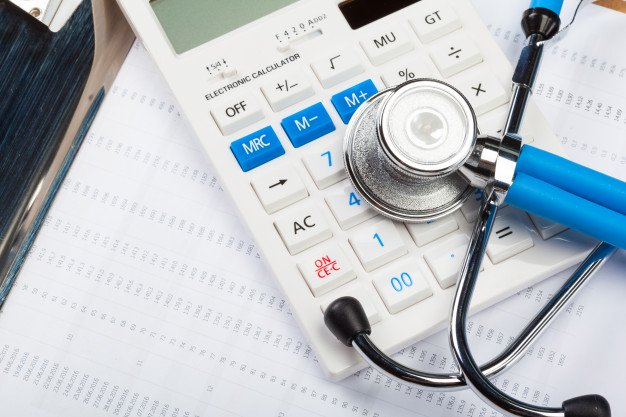In the dynamic landscape of healthcare, managing patient financial responsibility is not just a financial necessity but also a critical component of delivering high-quality care. Practitioners often face the challenge of balancing patient satisfaction with the practicalities of financial management. By addressing patient responsibility early in the care process, healthcare providers can enhance both the efficiency of their practices and the relationships they build with their patients.
This article delves into the importance of determining patient financial responsibility promptly and provides actionable insights on how to navigate conversations about payment. We will explore the benefits of offering flexible payment plans and outline essential steps to assess patient responsibility before their visit. By implementing these strategies, healthcare providers can create a more transparent and patient-centric financial experience, ultimately fostering a stronger partnership between providers and patients.
What is Patient Responsibility?
Patient responsibility refers to the portion of a medical bill that the patient is required to pay out-of-pocket, rather than their insurance provider covering the cost. This amount can vary significantly depending on the patient’s insurance plan.
For example:
- Uninsured Patients: Patients without health insurance are responsible for paying 100% of their medical bills.
- High-Deductible Health Plans (HDHPs): Patients with HDHPs are required to pay their medical expenses out-of-pocket until their deductible is met, which typically involves higher upfront costs.
Increasingly, patients are opting for HDHPs, often under the assumption that they won’t need much medical care throughout the year. However, when they do require more medical attention than anticipated, they may find themselves with unexpectedly high medical expenses.
Understanding patient responsibility is crucial for both healthcare providers and patients. Providers must communicate these financial obligations clearly to ensure timely and complete payment, while patients should be fully informed of their potential costs to avoid surprises.

How Can You Determine Patient Responsibility?
Determining patient responsibility is straightforward when you have the right tools at your disposal. Modern medical billing software equipped with a prior authorization tool and a patient cost estimator allows providers to quickly and accurately determine a patient’s financial responsibility for their services.
In the past, providers often had to wait until a claim was denied or spend considerable time on the phone with insurance companies to estimate what the patient might owe after their visit. These time-consuming methods not only delayed billing but also left patients uncertain about their financial obligations.
With advanced medical billing software, you can calculate a patient’s out-of-pocket costs in real time, right at the point of care. This means you can inform patients of their exact responsibilities before they leave the office, leading to fewer billing surprises and improved patient satisfaction.
Importance of Determining Patient Responsibility Early
Determining patient financial responsibility early is essential for smooth healthcare management. By setting clear expectations upfront, providers can secure timely payments, which are vital for the practice’s financial health. This proactive approach not only benefits the provider but also builds trust with patients, as transparency about costs makes them feel more comfortable and confident in their care.
Knowing patient responsibility early also helps providers identify those who may need financial assistance or flexible payment options. Offering solutions like payment plans shows commitment to patient well-being and can boost satisfaction and loyalty.
Clear, upfront communication about payments reduces the likelihood of billing disputes and surprises. When patients understand their financial obligations from the start, the billing process runs more smoothly, creating a positive experience for both patients and staff.
Finally, early determination of patient responsibility improves operational efficiency. It cuts down on time spent chasing payments, reduces billing errors, and allows providers to focus more on patient care, making the practice more sustainable in the long term.

How to Handle Difficult Conversations About Money
Discussing financial responsibilities with patients can be tough, but it’s essential for running a sustainable healthcare practice. The key to these conversations is creating a positive, respectful dialogue that focuses on the patient’s ability to pay, not just their willingness. This helps you better understand their financial situation and show empathy.
Start with Transparency:
Begin by clearly explaining the costs of treatment in simple, non-medical terms. Make sure the patient understands the financial details and emphasize the importance of addressing these upfront. Acknowledge that money matters can be stressful, which helps create an atmosphere of support and trust.
Offer Payment Flexibility:
If a patient is struggling to pay, offer flexible options like installment plans or discounts for upfront payments. This shows you’re committed to their well-being and helps reduce financial stress, while still ensuring they receive the care they need.
Be Clear About Consequences, but Respectful:
It’s important to explain the need for timely payments, but do so in a way that highlights the mutual benefits—keeping care quality high and the practice sustainable. Focus on finding solutions together rather than penalizing the patient.
Key Takeaway:
Effective financial conversations require empathy, clear communication, and flexibility. By focusing on what the patient can afford, offering payment options, and being transparent about the importance of timely payments, you strengthen the patient-provider relationship and ensure both financial and healthcare success.
How RCM Services Can Help You Collect Payments:
Whether it is a past due payment, or your patient is still in the office, the utilization of RCM services can help you collect more on those patient responsibility balances.
1) Credit Card Processing
In today’s age, patients need to be able to pay with a credit card or they will not likely pay at all. An integrated software solution can help your front-line staff process credit cards from the front desk, increasing the number of patient payments you collect in the office. Integrated software can also make it possible for your patients to process credit card payments through their patient portal. Your best chance at collecting a payment from a patient who is ready to pay is via credit card processing.
2) Outsource Difficult Collections
By outsourcing difficult collections, you hand over time-consuming patient responsibility balances to billing experts. Your RCM services vendor can help work with your patients, offering them the empathy and confidence they need to pay on their medical expenses. This will free up the time of your staff to work on more patient critical tasks.
3) Claim/Denial Management
The quickest way to make sure you get your payment is to partner with an RCM services vendor who can effectively manage your claims and denials. With the right vendor, your practice can achieve 99% clean claims and grow your revenue. Even though you cannot always keep patient responsibility balances from happening, maximizing your clean claims will make sure you are optimizing your reimbursements from payers.
In the ever-evolving landscape of healthcare, the surge in High Deductible Health Plans (HDHPs) has placed a spotlight on patient responsibility balances, presenting a significant challenge for healthcare providers. As patients bear a larger portion of their medical expenses, providers find themselves in a precarious position, relying on patient payments to sustain their revenue streams. Understanding and effectively managing patient responsibility balances have become paramount for the financial health of medical practices.
Ready to streamline your payment collection process? Schedule a free demo of our billing software today and discover how CollaborateMD can help your practice increase revenue and improve patient satisfaction.





